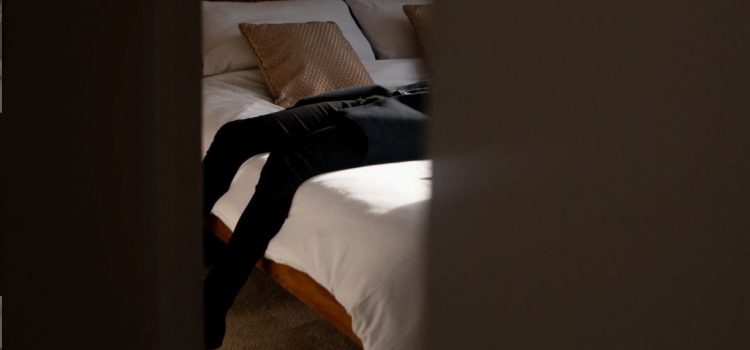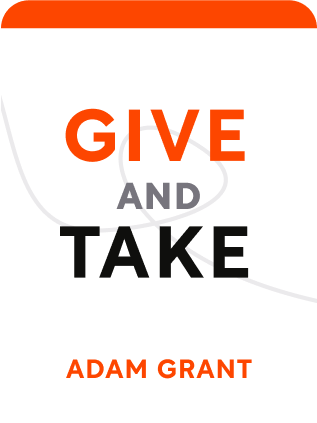

This article is an excerpt from the Shortform book guide to "Give and Take" by Adam Grant. Shortform has the world's best summaries and analyses of books you should be reading.
Like this article? Sign up for a free trial here .
Are you a natural giver and find yourself focusing more on others than yourself? Do you want to know how to prevent burnout from giving too much of yourself?
In his book Give and Take, Adam Grant discusses the benefits of being a giver in life. He also takes some time to address the downsides of being a giver—specifically, the burnout you can feel after giving too much without reciprocation.
Continue reading for Grant’s advice on how to prevent burnout from giving too much.
Avoiding Burnout as a Giver
It’s a myth that self-interest and other-interest lie on the same spectrum, and that caring about yourself necessarily means not caring about others.
Instead, self-interest and other-interest are completely independent motivations – you can have both be very strong, or both be weak, forming this 2×2 matrix:
| Low Other-Interest | High Other-Interest | |
| Low Self-Interest | Apathetic | Selfless: Self-sacrificing Givers |
| High Self-Interest | Selfish: Takers | Otherish: Successful Givers |
Givers are universally high in other-interest, by definition. But givers vary in self-interest.
Givers who have low self-interest are selfless: they sacrifice their own gain for the benefit of others. This “pathological altruism” decreases their own well-being and risks burnout. Interestingly, selfless givers also tend not to ask for help, as they’re determined to be in the helper role and don’t want to inconvenience others.
Givers who have high self-interest are otherish: they’re ambitious and have goals relating to gaining influence and attaining excellence. Otherish givers still give more than they receive, but they are discriminate with their time, choosing how and to whom they give. They want to grow the overall pie and see the world as more than zero-sum, but they still want a piece of that pie.
Maintaining a balance between self-interest and other-interest is important for mental health. This is true even in trusting relationships like marriages.
Even though otherish givers superficially appear less giving than selfless givers, they have greater stamina and contribute more over time. In comparison to matchers and takers, otherish givers build a reserve of happiness that fuel their work.
Making the Giving Impact Clear
One tip for how to avoid burnout as a giver is to see the impact of your altruism. Because givers are motivated by benefiting others, the result of the giving must be made obvious. In the absence of positive feedback, the giving effort seems to disappear into a black hole, risking “compassion fatigue” and burnout.
The author conducted a study of college donation volunteers, where he found givers were over 50% less productive than takers. This was an odd finding in a volunteer setting – you’d expect people with high other-interest to do well. Then he noticed a sign in the call center: “Doing a good job here is like wetting your pants in a dark suit. You get a warm feeling but no one else notices.”
Realizing the lack of feedback on giving behavior, Adam divided students into experimental groups and, for one group, invited student scholarship recipients to speak to the callers. This group increased calls by 144% and total revenue generated by over 400% compared to control. (Interestingly, when managers gave the same message as the invited scholarship recipients, it didn’t work. Sometimes managers have to “outsource inspiration” to other people, from whom the message sounds more genuine.)
In another experiment, radiologists who evaluated CT exams with a photo attached to the file increased diagnostic accuracy by 46% and found more key diagnostic findings. The idea is that radiologists who see the impact of their work – the face of the patients they’re helping – do a better job.
Teachers are prone to burnout because it can take years for their impact to appear, and each cohort of students is whisked away every year without followup. Teachers who feel a sense of impact tend to burnout less, suggesting that perception of impact serves as a buffer against stress.
Thus, companies try to show the impact of their work to employees. Wells Fargo creates videos of customers talking about how low-interest loans helped them reduce debt. Medtronic sets up tours of employees at hospitals to see their devices at work and invites patients to speak at their annual party.
Otherish Strategies for Personal Happiness
Giving is energizing only when it’s an enjoyable, autonomous choice rather than when it’s forced as part of duty or obligation. Otherish givers practice a few techniques to decide where they give, rather than diluting themselves indiscriminately.
Chunking is the practice of combining your giving into a small period of time, rather than sprinkling it throughout the week. Chunking allows the giver to give when it’s more convenient and when her energy levels are appropriate, rather than having distracting interruptions. By compressing the experience, the impact is also made more vivid.
Studies show that chunking increases happiness for givers and increases productivity by lowering context switching costs. Interruptions are costly, since it takes time to switch back to your task. By chunking your giving time, you can avoid switching costs and end up happier, while also helping other people.
Chunking can also be applied in topic matter, by giving primarily in areas that are interesting to you and connect to your core values. If you love animals, then 100 hours at a pet shelter will be far more energizing than 100 hours cleaning up parks.
Another study shows that having a moderate level of giving is better than no giving or too much giving. Limiting volunteering time promotes happiness – adults who volunteer between 100 and 800 hours per year are happier and more satisfied with their lives than those serving below 100 and above 800. Furthermore, adults who volunteer 100 hours reduce mortality risk; volunteering above 100 hours shows no additional benefits. Because giving has diminishing marginal returns, capping your time helps preserve personal time for self-interest.
Finally, seeking help from others allows otherish behaviors to recover their energy. This “tend and befriend” response to stress is common in humans and acts as a buffer against stress. Selfless givers tend not to seek help, since they’re rooted in the giving role and don’t want to burden other people.
Benefits of Giving
Giving builds willpower. Experiments show that other-directed people (givers) had higher willpower in tasks like doing a rote chore. The theory: givers have to consistently override their ego and self-interest to help others – this trains a general willpower and self-control muscle.
Giving correlates with higher incomes. In a study of Americans, every $1 in giving increases income by $3.75. In other words, people who give more tend to earn more. (This is distinct from the converse, where people who earn more tend to give more, which is also true – for every $1 in extra income, giving went up by $0.14).
Why might this happen? Giving may promote a “helper’s high,” increases life satisfaction, activates dopamine reward circuits, and decreases depression. This happiness causes you to work harder and more effectively, be perceived as a more pleasant and effective person by others, and set more ambitious goals.
Anecdote of an Otherish Giver
Conrey Callahan served in Teach for America but felt burnt out. Instead of dialing back her time or pouring more energy into TFA, she started a nonprofit branch of Minds Matter Philadelphia to mentor students. Even though she was working more than before, she was re-energized for reasons given in this chapter:
* she could see the impact of her work more clearly
* context changing renewed her energy
* she made a conscious choice to start her nonprofit, rather than serving TFA out of obligation
* she chunked her giving time
Grant points to this as otherish behavior – a selfless giver would have plowed even more time into teaching at TFA, sacrificing her own well-being.

———End of Preview———
Like what you just read? Read the rest of the world's best book summary and analysis of Adam Grant's "Give and Take" at Shortform .
Here's what you'll find in our full Give and Take summary :
- The three reciprocity styles—givers, takers, and matchers
- Why givers are the most successful in life
- How to set up a giving culture






